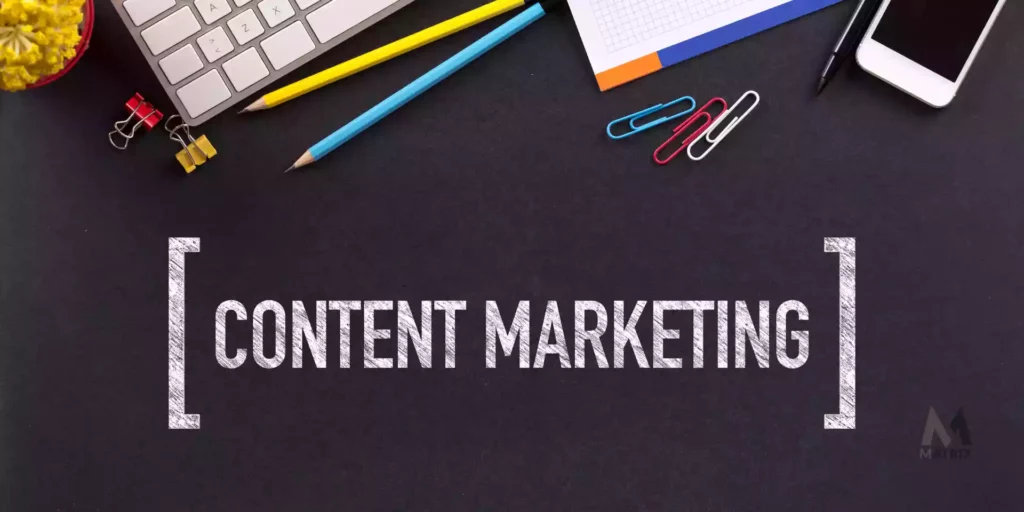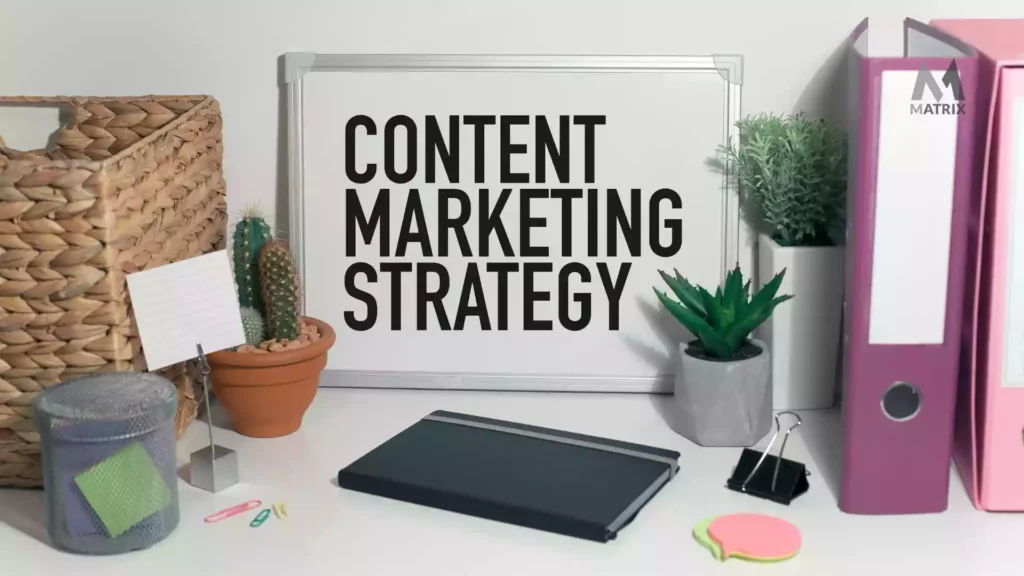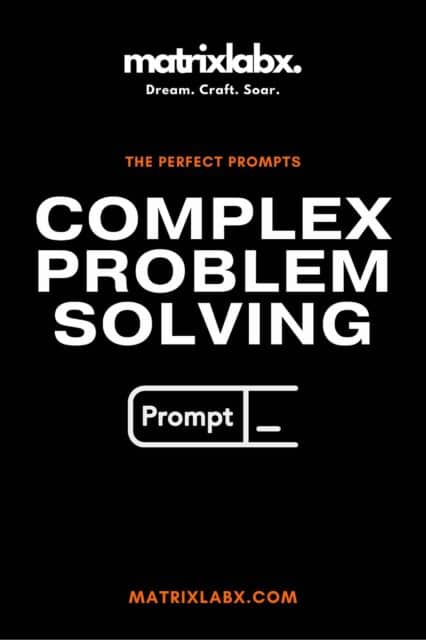What is Content Marketing, and Why is it Important?
Learn about what content marketing is and why it is important to drive growth and sales.
I field about 10 weekly calls about content marketing and how they may use it to build sales. Not a 20-minute conversation.
Most people think of content marketing as a process that involves buying ads, distributing flyers, or hiring a public relations firm.
While all those activities are part of marketing, they’re just the tip of the iceberg. The heart and soul of marketing create content that attracts attention and engages potential customers.
Content can take many forms, including blog posts, articles, social media updates, infographics, and videos.
Jennifer’s Content Marketing Transformation: A Case Study
Before: Struggling to Keep Up with Content Demands
Jennifer was a marketing manager for a mid-sized software company. She knew the importance of consistent content creation to drive website traffic and generate leads. However, with a small team and limited time, producing even one high-quality blog post per week felt like climbing a mountain.
Her team often resorted to hastily written posts that lacked SEO optimization and failed to engage readers. The company’s website traffic was stagnant, and Jennifer was frustrated. She knew that more frequent, relevant content could be a game-changer but couldn’t see how to make it happen with her current resources.
Struggling to Keep Up with Content Demands?
In today’s digital landscape, creating consistent, high-quality content is more challenging—and more important—than ever. Without a clear plan and the right tools, your brand risks falling behind in the crowded marketplace.
The Turning Point: Outsourcing Content Generation
After researching options, Jennifer discovered AIContentPad, a content generation platform promising high-quality, SEO-optimized blogs tailored to her industry. Skeptical but desperate for a solution, she decided to outsource her content creation. She opted for a plan allowing her to publish one blog post daily.
From day one, the results were impressive. AIContentPad’s intuitive interface lets her customize topics and tone to align with her brand voice. The platform used advanced analytics to identify trending topics in her industry, ensuring each post was relevant and timely. Even better, it provided polished drafts in hours, not days. 10 Most In-Demand Types of SEO Services to Focus On in 2025
After: Results That Exceeded Expectations
Within a month of publishing daily blog posts, Jennifer saw dramatic changes:
- Traffic Surge: Her website traffic tripled. The consistent stream of fresh, keyword-rich content improved the company’s SEO rankings, landing them on the first page of Google for several competitive keywords.
- Lead Generation: The blog became a lead magnet. With strong calls to action in every post, the company started collecting 50% more email addresses through gated content downloads.
- Industry Authority: Jennifer’s company gained recognition as a thought leader. Colleagues and competitors began sharing their posts, amplifying the brand’s reach.
- Team Productivity: Jennifer’s team was freed from the burden of content creation, allowing them to focus on strategy and other high-impact tasks.
Key Takeaway
By outsourcing content creation to AIContentPad, Jennifer transformed her marketing strategy. Instead of stressing over content, she focused on amplifying its impact, proving that smart delegation can unlock incredible results. Her story is a testament to the power of leveraging technology for consistent, high-quality content creation.
1. What is content marketing, and why is it important?

Content marketing creates and distributes valuable, relevant, consistent content to attract and engage a target audience. It’s one of the most effective ways to connect with customers and generate leads. Content can take many forms, including blog posts, articles, social media updates, calculators, configurations, infographics, videos, etc.
There are several reasons why content marketing is important. First, quality content helps to improve brand awareness. When potential customers see your business delivering valuable content, they’re more likely to trust and consider doing business with you.
Additionally, content helps create a deeper connection with customers by providing valuable information and insights.
This builds trust and loyalty, leading to increased sales and conversions.
Finally, content marketing can be extremely cost-effective, especially compared to traditional marketing methods.
If you’re not already using content marketing, it’s time to start. It’s an essential part of any effective marketing strategy. By creating quality content, you can attract attention, build trust, and generate leads, which can help grow your business.
2. What are the benefits of content marketing?

Using content marketing as part of your overall marketing strategy has several benefits.
First, quality content helps to improve brand awareness. When potential customers see your business delivering valuable content, they’re more likely to trust and consider doing business with you.
Additionally, content helps create a deeper connection with customers by providing valuable information and insights. This builds trust and loyalty, leading to increased sales and conversions. Finally, content marketing can be extremely cost-effective, especially compared to traditional marketing methods. AIProdPad Product Development Transformation Through AI-Driven Innovation [White Paper]
Your Blueprint for SEO Success in 2025
Whether you’re a business owner, marketer, or seasoned SEO professional, this guide is tailored to give you a competitive edge in the evolving digital landscape. Get SEO Pricing.

Some of the other benefits of content marketing include:
- Helps improve SEO: By creating quality content, you can help your website rank higher in search engine results pages (SERPs), driving more traffic to your site.
- Drives social media engagement: Content is a great way to get people talking about your brand on social media. Engaging and informative content encourages people to share it with their followers, which can help increase your reach and engagement.
- Increases leads and sales: By providing valuable information to potential customers, you can generate leads and convert them into paying customers.
- Helps build trust and credibility: Quality content helps establish your business as an authority in your industry. When you provide useful information that educates, entertains, or inspires people, they’re likelier to trust and do business with you.
Content marketing is a powerful tool that offers several benefits for businesses. If you’re not already using it as part of your marketing strategy, now is to start.
3. How do I get started with content marketing?
If you’re new to content marketing, the first step is to create a content strategy.
This will help you identify your target audience, determine what types of content you should create, and outline how and when you plan on sharing it. Some things to consider when creating your content strategy include:
- Your target audience: Who are you trying to reach? Are they decision-makers or influencers in your industry? What information do they need to make decisions about products and services related to your business?
- Goals for your content: What do you hope to achieve with your content marketing efforts? Do you want more website traffic? More social media engagement or followers? A higher conversion rate?
- Content types: What are the different formats and content types you plan on using, such as blog posts, social media updates, infographics, videos, etc.?
- Promotion and distribution channels: How will you share your content with your target audience? Will you post directly to social media or share through your website or email marketing campaigns? Which social media platforms do they use most frequently?
Once you’ve created a content strategy that aligns with your goals and targets your audience’s needs, it’s time to start creating and sharing content.
This might include writing blog posts, developing infographics or other visual assets, creating videos, launching an email marketing campaign, etc.
The key is to be consistent with your content and share it regularly. Remember, the goal is to build trust and credibility with your audience, so don’t be afraid to show them who you are and your business.
Several content marketing resources and tools can help. BuzzSumo allows you to research the most popular content in your industry to generate ideas for your strategy.
Google Analytics can help you track your content performance, see what’s working, and make necessary adjustments. Hootsuite Insights provides valuable data and insights on social media trends to guide your content strategy.
3. Types of content that can be used in a content marketing strategy

You can use various types and formats to reach your target audience when it comes to content marketing. Below are some of the most popular types:
- Blog posts: Written content is one of the most common forms of content marketing. A blog post can be anything from a short, 500-word article to a longer, 2,000-word piece. When writing blog posts, keep your target audience in mind and focus on relevant and interesting topics. Here’s a TIP. Write about 2,500 to 3,000 words. We’re found to be sweet at about 2,750 words.
- Social media updates: Social media is a great way to share your content with a wider audience. When sharing links to your blog posts or other content, use relevant hashtags and include a short description of the content. This will help increase your reach and engagement on Twitter, Facebook, and Instagram on social media platforms.
- Infographics or other visual assets: Visual content can also be a powerful tool in content marketing. Infographics are great for quickly communicating complex information in an engaging and easily digestible format. Other visual assets include videos, photos, memes, GIFs, etc.
- Ebooks and whitepapers: Long-form written content such as ebooks and whitepapers can also be valuable tools for content marketing. These documents are typically more detailed than blog posts and often focus on a specific topic or industry issue. They can be used to educate prospects on your product or service, build trust and credibility, and generate leads.
- Case studies: Case studies are another type of long-form content that can be used for content marketing. Typically, these stories showcase how your product or service has helped a specific customer or client achieve their desired results. Like ebooks and whitepapers, case studies are a great way to educate prospects about your business and generate leads.
- Webinars: Webinars are live or pre-recorded online events that allow you to share information with a large audience in real time. They’re typically used to provide training or educational content but can also be used as a lead-generation tool. If you plan on hosting a webinar, promote it in advance and include a call-to-action (CTA) at the end to encourage attendees to sign up for your email list or download a white paper or ebook.
- Podcasts: Podcasts are another popular form of content marketing. They’re similar to webinars in that they’re typically used to provide educational or informational content. Unlike webinars, podcasts can be listened to anytime and don’t require a live audience. This makes them ideal for busy professionals. If you launch a podcast, promote it across social media channels and include links to your website.
Content marketing is a powerful tool for reaching and engaging your target audience. Using the types of content listed above, you can create a strategy to help you achieve your business goals.
4. How to create quality content that engages customers

Quality content is key for marketing, as it helps to engage and connect with customers on a deeper level. Content also helps to improve brand awareness and generate leads.
By creating valuable, relevant, and consistent content, businesses can see a positive return on investment (ROI) in increased website traffic, better customer engagement, and higher conversion rates.
Several key elements go into creating quality content, including:
1. High-quality research – When writing blog posts or other types of content, it’s important to research and base your writing on reliable data and sources. This will help ensure that you provide educational and accurate information to your readers. A good tip is to use a mix of primary and secondary resources when researching, as this can provide a more holistic view of the topic.
2. Tailored tone – Your content should be written in a style that appeals specifically to your target audience, whether casual, professional, friendly, etc. Additionally, whenever possible, you should naturally incorporate keywords into your content without overusing them. This helps improve SEO and ensure your posts are more search engine-friendly.
3. Short paragraphs—When writing blog posts or other long-form content, it is important to break up the text with short paragraphs and use eye-catching headlines. This makes it easier for readers to scan through your post and retain the information you’re providing. Additionally, shorter paragraphs help to make your writing appear more professional, as longer paragraphs can feel overwhelming for some readers.
4. Engaging visuals – Good visual content such as images, charts, graphs, and videos can help attract attention from readers who are otherwise skimming over your post. Additionally, visual content makes it easier for readers to understand complex concepts and helps them retain the information longer. A good tip is to use a mix of infographics, data visualization tools such as Visme and Venngage, and stock photos to create interesting visuals that complement your written content.
Focusing on these key elements when creating your content marketing strategy can help you provide high-quality material that engages and connects with customers more deeply.
Google Ads Checklist – Download Now! 🚀
Struggling to get the most out of your Google Ads? 🔥 Download our Google Ads Optimization Checklist and take your campaigns to the next level!
✅ Maximize Clicks & Conversions
✅ Lower Your Cost-Per-Click (CPC)
✅ Improve Ad Quality Scores
✅ Target the Right Audience
This free checklist will help you set up, optimize, and scale your Google Ads campaigns for maximum ROI.
5. How to measure the effectiveness of your content marketing
One of the most important aspects of any marketing strategy is measuring its effectiveness in terms of ROI. Measuring the success of your content marketing efforts can be tricky, but there are a few key metrics that you can focus on, including:
1. Website traffic – One way to gauge the effectiveness of your content is by looking at the amount of website traffic it generates. You can use Google Analytics to track how many people visit your site and where they’re coming from (e.g., organic search, social media, direct traffic, etc.). If you see a significant increase in website traffic after implementing a content marketing strategy, your efforts are likely paying off.
2. Social media engagement – Another metric to focus on is social media engagement, which refers to the number of likes, shares, comments, and other actions that people are taking on your content. This can help you determine how well your posts resonate with your target audience, which can influence the types of content you create moving forward.
3. Lead generation – Besides tracking website traffic and social media engagement, paying attention to lead generation metrics such as click-through rates (CTR), conversion rates, and open rates is important. These metrics will give you a more detailed look at how effectively your content generates new leads for your business. For example, if your CTR is low or you have a high bounce rate on specific site pages, this may indicate that the content isn’t resonating with your target audience, and you may need to make some changes.
By keeping a close eye on these key metrics, you can measure the effectiveness of your content marketing strategy and make any necessary adjustments to improve results over time. As long as you stay focused on providing high-quality, relevant content tailored to your target audience, you’re sure to see positive returns from your efforts in terms of increased website traffic and better conversion rates.
85% of Web Pages Ranking in the Top 3 Will Feature Long-Form, AI-Augmented Content
Search engines will favor content that combines in-depth analysis with conversational tones, much of which will be AI-enhanced. AI-assisted research and writing tools will enable the creation of comprehensive, authoritative content at scale.
5. Tips for promoting your content
Once you’ve created valuable, relevant content, the next step is to promote it so that more people can see it. Here are a few tips for getting your content in front of the right audience:
1. Use social media – One of the most effective ways to promote your content is by sharing it on social media. This allows you to reach a large number of people in a short amount of time. You can share links to your blog posts or articles on Facebook, Twitter, LinkedIn, and other social media platforms. Additionally, you can use social media tools such as Hootsuite and Buffer to help automate the process.
2. Submit your content to article directories and submission sites. Another great way to promote it is by submitting it to article directories and submission sites, such as Medium and OrchestraAI’s publishing platform. These platforms typically have a large audience to help you reach new readers. In addition, they often allow users to share your articles on social media or embed them on their websites, further extending your content’s reach.
3. Work with influencers – Another effective strategy for promoting your content is leveraging the influence of other people in your industry with a large online following. You can do this by working with influencers directly (e.g., collaborating on blog posts or guest posting) or partnering with companies specializing in influencer marketing and placement programs for brands.
4. Track and analyze your results—Finally, it’s important to track and analyze your efforts’ results to see what’s working and what isn’t. This will help you make any necessary adjustments and continue improving your content marketing strategy over time. By consistently creating high-quality, relevant content tailored to your target audience, you can achieve great results and grow your business.
6. Measuring the success of your content marketing campaign
Measuring success is one of the most important aspects of any content marketing campaign. This allows you to track your progress and make necessary adjustments to improve results. There are several different ways to measure the success of your content marketing campaign, including website traffic, social media engagement, lead generation, and conversion rates.
By tracking these key metrics, you can get a more detailed look at how well your content resonates with your target audience and determine which types of content are most effective at generating leads. If you find that your website traffic is low or your conversion rates are low, this may indicate that your content needs some improvement.
However, it’s important to note that not all these metrics are equal. Website traffic, for example, can be a good indicator of the reach of your content but doesn’t necessarily tell you how many people are engaging with it. On the other hand, social media engagement is a more accurate measure of how well your content resonates with your audience.
Lead generation and conversion rates are also important metrics to track, as they show you how effectively your content generates leads and converts them into customers or clients. If your content isn’t performing well in these areas, it may be time to change your strategy.
By tracking the right metrics, you can better understand how well your content marketing campaign performs and make necessary adjustments to improve your results.

7. AI and content marketing future
With the rapid advancement of artificial intelligence (AI), many experts predict that AI will play a major role in the future of content marketing. Gartner has predicted that by 2021, 85% of all customer interactions will be managed without human intervention.
So, what does this mean for content marketers? We must start preparing for a future where AI plays a major role in content creation and distribution. This could include using AI to help produce content, identify relevant trends and data, and even distribute content through social media channels.
In addition, AI could also be used to target and personalize content for individual readers based on their interests and preferences. This would allow businesses to create a more relevant and personalized customer experience, which could help improve engagement and conversion rates.
As AI continues to grow in popularity, content marketers will need to start adapting to these changes by incorporating AI into their strategies to stay competitive. While the future of content marketing is still somewhat uncertain, one thing is clear—if you want your business to succeed, you need to embrace this exciting new technology and use it to your advantage.
Overall, content marketing is an important tool for any business to boost brand awareness, connect with customers deeper, and increase ROI. By creating high-quality, relevant content that resonates with your target audience and using effective distribution channels such as social media, you can help to improve your results and stay ahead of the competition. So, if you haven’t already done so, it’s time to start investing in content marketing!
Are you reading AI-written content or a copywriter? Want to know?
Content That Converts: Transparent Pricing for Maximum ROI
Explore Matrix Marketing Group’s Flexible Pricing Plans for Premium Content and Marketing Solutions Tailored to Your Goals.
Conclusion
As AI technology continues to grow and evolve, it’s clear that content marketing will need to adapt to stay competitive. Businesses can prepare for the future of content marketing by incorporating AI into their strategies.
This could include using AI to help produce content, identify relevant trends and data, and even distribute content through social media channels. Businesses can create a more personalized customer experience, increasing engagement and conversion rates. Businesses need to start preparing for the future of content marketing now, as this exciting new technology will play a major role in the years ahead.
How Matrix Marketing Group can help with content marketing
Matrix Marketing Group is a full-service marketing agency that can help businesses of all sizes with their content marketing needs. We offer various services to help you create and distribute high-quality content that will resonate with your target audience.
Our experienced professionals can help you develop a content marketing strategy that fits your unique business needs and goals. We can create original content for your website, blog, social media channels, and e-newsletters.
We can also help you distribute your content through effective channels such as search engine optimization (SEO), social media, and email marketing.
We also offer several other services that can help you boost your brand awareness and generate leads, including web design, SEO, PPC advertising, and more. So, if you’re looking for help with your content marketing efforts, contact Matrix Marketing Group today and let us show you how we can help you succeed!
General FAQs
What is content marketing?
Content marketing is creating and distributing valuable, relevant, consistent content to attract and engage a target audience. This could include using blogs, social media, email newsletters, and other channels to share original content with your audience.
What are the benefits of content marketing?
Content marketing can help businesses improve brand awareness, connect with customers deeper, and generate leads. You can achieve these benefits by creating high-quality, relevant content that resonates with your target audience and using effective distribution channels.
How can I get started with content marketing?
There are some ways to get started with content marketing. You can start by creating a content strategy that outlines your goals and the types of content you plan to create. You can also use AI technology to help produce and distribute your content. You can use social media and other channels to share your content.
How often should I publish new content?
There’s no one-size-fits-all answer to this question, as the frequency of new content publication will vary depending on your business and audience. However, a good rule of thumb is to publish new content regularly, whether once a week, once a month, or even daily. The key is to find a cadence that works well for you and your audience and to stick with it over time.

